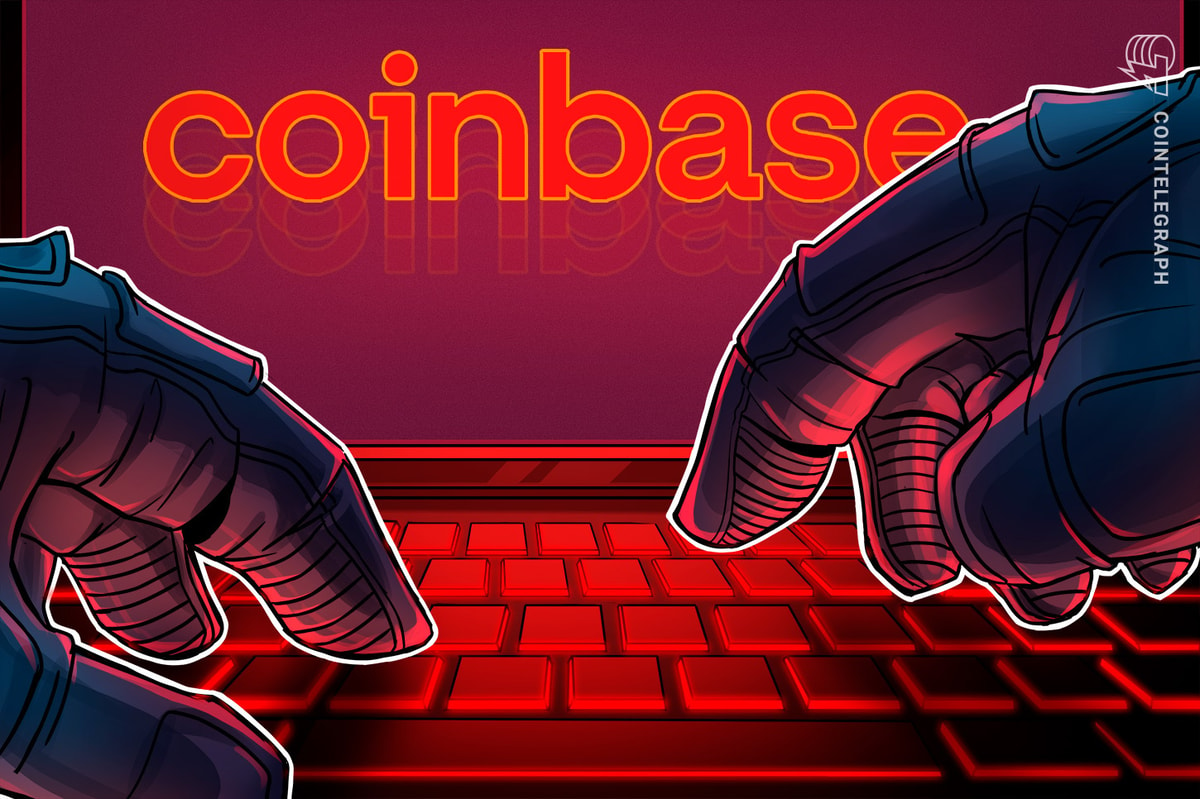Media magnate Steve Forbes recently criticized cryptocurrencies for their volatility, saying that one day they can be a steak, and the next day they can turn into dog food. Price fluctuations have accompanied the digital currency market since its inception and have been an important reason for the interest of traders in cryptocurrency.
But it seems that something has gone wrong in the last couple of months. As strange as it seems, Bitcoin (BTC) and Ether (ETH) have been demonstrating unusual stability since late May. And while a relatively stable dynamic for Bitcoin’s price can be due to the absence of significant events in the post-halving market, the passive behavior of Ether is baffling some traders.
The question is why the price of ETH remains stable despite the growth of its other fundamental parameters and the boom of the decentralized finance market and Ether options? Is this stability good for the market in general, and what does it signal?
Market news doesn’t affect the price of ETH
Positive news has always been an important catalyst for the growth of crypto prices. Now, Ether has three such news items at once: the growth of the DeFi market, the upcoming Ethereum 2.0 upgrade and the boom in ETH options.
It is also worth noting the rapid rise of Ethereum transactions to a 27-month high due to the growing popularity of the Tether (USDT) stablecoin built on the Ethereum blockchain and the booming growth of DeFi applications. According to recent data, the number of USDT transactions made on Ethereum has soared by 450% since the start of the year, the daily transaction volume made by DeFi users reached an all-time high in June, and Ethereum network fees hit multiyear highs to surpass Bitcoin. Although some volumes were linked to spamming by miners that flooded the network with thousands of small transactions, Ethereum blockchain use has reached new highs, suggesting fundamental growth.
News around the upcoming launch of Ethereum 2.0, although ambiguous, is more likely positive than negative. The latest reports suggest that most of the work on the proof-of-stake upgrade has already been completed, and clients are launching test networks to support the anticipated event. In particular, Prysmatic Labs launched a test network on July 2 called Sapphire for Ethereum 2.0 based on the Casper PoS protocol. However, the second-largest cryptocurrency’s price has failed to follow the bullishness as indicated by the fundamentals. Instead, Ether has been floundering between $230 and $250 for over a month.
In a conversation with Cointelegraph, Kevin Cheng, chief operating officer of crypto exchange BigONE, suggested that the growth of Ethereum’s fundamental parameters have long-term effects, while the movement of liquid funds can influence the price of ETH in the short term. Speaking to Cointelegraph on why the growth of DeFi hasn’t influenced Ether’s price, Pierce Crosby, general manager of charting platform TradingView, suggested:
“The recent boom in DeFi is mostly tapping into the interests of ’existing’ Ether investors or ’hodlers.’ As a result, there is very little new ’demand’ in terms of cash inflows. Comparably, when a currency is listed on a new broker/exchange or similar commercial channels, there is net new cash to a given security; DeFi is just an additional application for existing investors. Not a mass-market product.”
DeFi and Ether options are two factors that are very important for the cryptocurrency market, but they are still in their early adoption stages, according to Chris Thomas, head of digital assets at online banking firm Swissquote. He told Cointelegraph: “De-fi is extremely small still with only a small proposition of crypto traders involved and still very high risk — proven with the issues suffered by Maker over March 12th. Hence, anyone trading in the de-fi space just now is taking a huge risk.”
Is it a matter of correlation?
According to a report published by analytics company Skew in November 2019, Ether had been the highest-correlated cryptocurrency to Bitcoin for two years. The situation seems to have remained unchanged, given the latest data provided by the same company on June 23. Skew’s latest statistics show that ETH price volatility is almost identical to that of BTC, and the volatility spread between the two cryptocurrencies is close to zero. According to Skew, the volatility of the Ether options market is only 2% higher than that of Bitcoin. For comparison, during the Black Thursday panic, Ether’s rate was 45% more volatile than Bitcoin’s.
Moreover, data by Coin Metrics shows that the correlation between the two leading cryptocurrencies has actually increased. More specifically, the ETH/BTC 30-day correlation at one point reached 0.88 — stronger than any other asset and higher than it was during the same period last year.

Given that Ether and other altcoins are not well insulated from Bitcoin market volatility, Ether may see big price fluctuations if Bitcoin starts to move, which could shake up things in the DeFi space, causing panic and uncertainty for Ether. Thus, while Bitcoin could initially see greater volatility, eventually it could be surpassed by Ether. Commenting on the correlation, Lucas Outumuro, a senior analyst at crypto intelligence firm IntoTheBlock, told Cointelegraph:
“ETH’s low volatility is certainly related to its high 30-day correlation with Bitcoin, which is currently at a correlation coefficient (R) of 0.85. Furthermore, ETH currently also has a high 0.60 correlation with the S&P 500 and has shown to increase when markets react negatively to coronavirus news as happened in March. This points to the likelihood of down-side volatility spiking in the event of a similar sell-off.”
Thomas also agrees that Ether’s low volatility is due to the overall low numbers for the crypto market, adding: “Increasing institutional interest is coming from the U.S., but it’s focusing more on the volatile stock markets just now, so has taken its eye off the crypto space.” Ether’s low volatility can mean there is less speculation in the market right now, according to Crosby:
“The low volatility of ETH versus BTC means there’s less speculative trading going on in ETH in general, which makes sense. Volatility itself implies large bets ’for’ or ’against’ currencies at a wide range, which makes sense for BTC (think maximalists versus classical finance thesis). ETH should remain comparably flat — by design.”
On the other hand, according to Dmytro Volkov, chief technology officer of crypto exchange CEX.IO, low volatility in the summer is a traditional pattern in all financial markets. Speaking to Cointelegraph about Ether price movements, he drew a parallel between crypto and traditional markets: “We are, however, expecting changes to this pattern in the near future, because the market is anticipating the arrival of major institutional investors.”
A wait-and-see approach
Even though the popularization of stablecoins has led to an increase in Ether’s fundamental indicators, it could also reduce its volatility. The fact is that while earlier traders used to find a direction for these funds to close a position in Bitcoin or altcoins, they are now transferring money to stablecoins in anticipation of a market reversal.
On the other hand, despite the relatively low volatility, it seems that Ether is feeling slightly stronger than the rest of the market due to user expectations around the launch of the Ethereum 2.0 upgrade and the transition of the network to a PoS algorithm. Analysts note an increase in the number of Ether wallets and the active accumulation of coins by miners. Ethereum has also seen its transaction volumes soar and daily fees surpass Bitcoin. Moreover, active addresses are surging toward the 400,000 mark, with more ETH leaving exchanges as users accumulate or lock up value in DeFi protocols.
Outumuro told Cointelegraph that although DeFi has increased the demand to use the Ethereum blockchain, the amount of ETH consumed by these transactions is still relatively small, which is potentially a reason why this increase in use has not yet impacted its price: “However, if the trend continues accelerating it is likely that the increase in demand to use the Ethereum blockchain will positively impact ETH’s price.” Speaking about the influence of Ether options, Outumuro suggested:
“Ethereum options are unlikely to impact ETH’s price as they trade contracts rather than actual ETH, and given that they use very high amounts of leverage it is difficult to gauge the actual demand behind derivatives.”
Skew also noted that the current size of the Ether options market is similar to the size of Bitcoin’s in December 2018. Since then, open interest of traders for Bitcoin options has shown significant growth.
According to Andreas Berg, CEO of cryptocurrency exchange Buytex, the growth of Ether options and Ethereum’s fundamental characteristics were likely primarily driven by investors taking active positions on cryptocurrency while expecting some volatility in the near term, telling Cointelegraph: “The boom of the DeFi market has made Ethereum’s fundamentals skyrocketing and has made traders believe that the ETH is bullish in the long-term.” Indeed, the volume of Ether long positions on Bitfinex reached a historic high of $435 million. Berg added:
“On the other hand, many traders have taken a wait and see approach which can also contribute to Ethereum price stability. This shows that the cryptocurrency market extremely depends on macro factors.”
The calm before the storm?
Cryptocurrency market volatility continues to stay low. However, the development of a strong price movement can be expected soon. Many analysts highlight the current decline in volatility as a signal of an upcoming price spike. Some of them, such as Dan Tapiero, are convinced that a prolonged period of low-volatility consolidation often ends with a big spike in volatility. Tapiero believes that Ether can exceed $500 due to favorable technical and fundamental factors. Meanwhile, crypto trader and analyst Michael Van de Poppe shared a similar opinion, saying that Ether could reach $300 by the end of summer.
Chris Burniske, a partner at venture capital firm Placeholder, claimed Ether has already surpassed Bitcoin in terms of growth over the years. This gap may widen even more, given Ether’s lower market capitalization and stronger fundamentals.
When it comes to the further influence of the growth of the DeFi market on Ether’s price, analysts are divided in opinion. Joseph Todaro, managing partner of crypto-asset investment fund Blocktown Capital, tweeted on June 16: “DeFi will likely help push ETH to $1 trillion market cap.”
Related: Bitcoin Price Touted to End Stagnation in Style, Surging to New High
Ari Paul, chief information officer of BlockTower — a crypto-asset investment firm — highlighted the possibility of liquidity mining fueling a bubble in the DeFi space. Liquidity mining refers to giving out governance tokens to put assets into a lending/borrowing protocol. As such, cryptocurrency users may expect ETH to be more volatile than BTC, especially with Bitcoin-related news drying up following the third mining reward halving on May 11.
Alongside Ether options, the high institutional activity confirmed by the Chicago Mercantile Exchange — otherwise known as CME — which saw a ten-fold increase in orders for BTC options over the past month, can bring a new dynamic to the ETH market. The platform Deribit demonstrated even more impressive values, with volumes reaching $1.1 billion.
Given the significantly smaller size of the cryptocurrency market when compared with the traditional one, such values may signal increased pressure from large capital, which could potentially cause large price fluctuations. In addition, it is expected that as countries begin to emerge from virus-induced lockdowns and their economies begin to revitalize, the crypto market will follow suit.
Volatility decreases as people take up blockchain tech
Price volatility always tends to diminish as the number of market participants increases over time, according to J. R. Forsyth, founder and CEO of blockchain project Onfo, as he told Cointelegraph: “Even though major advancements and developments might occur (or be announced) regarding these ecosystems, the coins have remained relatively stable. This must be attributed to the ever growing user base.”
Ether’s low volatility also suggests that market participants do not expect strong catalysts to have any impact on the prices of major cryptocurrencies. At the same time, Ether’s price stabilization allows investors to analyze all the factors related to the launch of Ethereum 2.0 to enter into long-term positions. Crosby added that the lack of volatility shows that people are watching the broader stock market and dollar index to get a sense of where the crypto market might move next:
“Lots of folks see the correlation to classical markets, and thus, position themselves defensively. The broader U.S. equity market is rallying to all-time highs, but the level of interest in crypto still hasn’t seen that snap back since April.”
Meanwhile, a growing number of other business-oriented blockchains such as Hyperledger, Corda and Tezos can also contribute to large uncertainty about the future of Ether’s price, according to Heinrich Zetlmayer, founder and general partner of Blockchain Valley Ventures, who told Cointelegraph: ”We are still early and the price logic of Ethereum was so far probably the same as for Bitcoin.”











